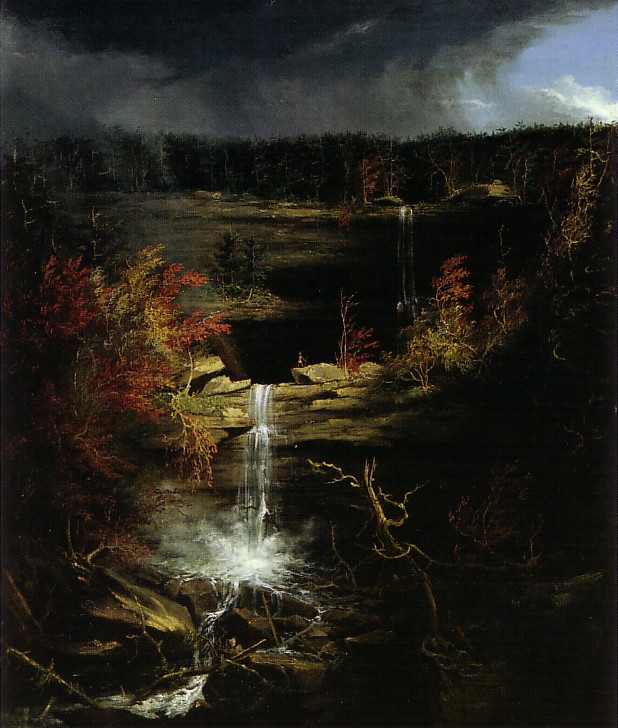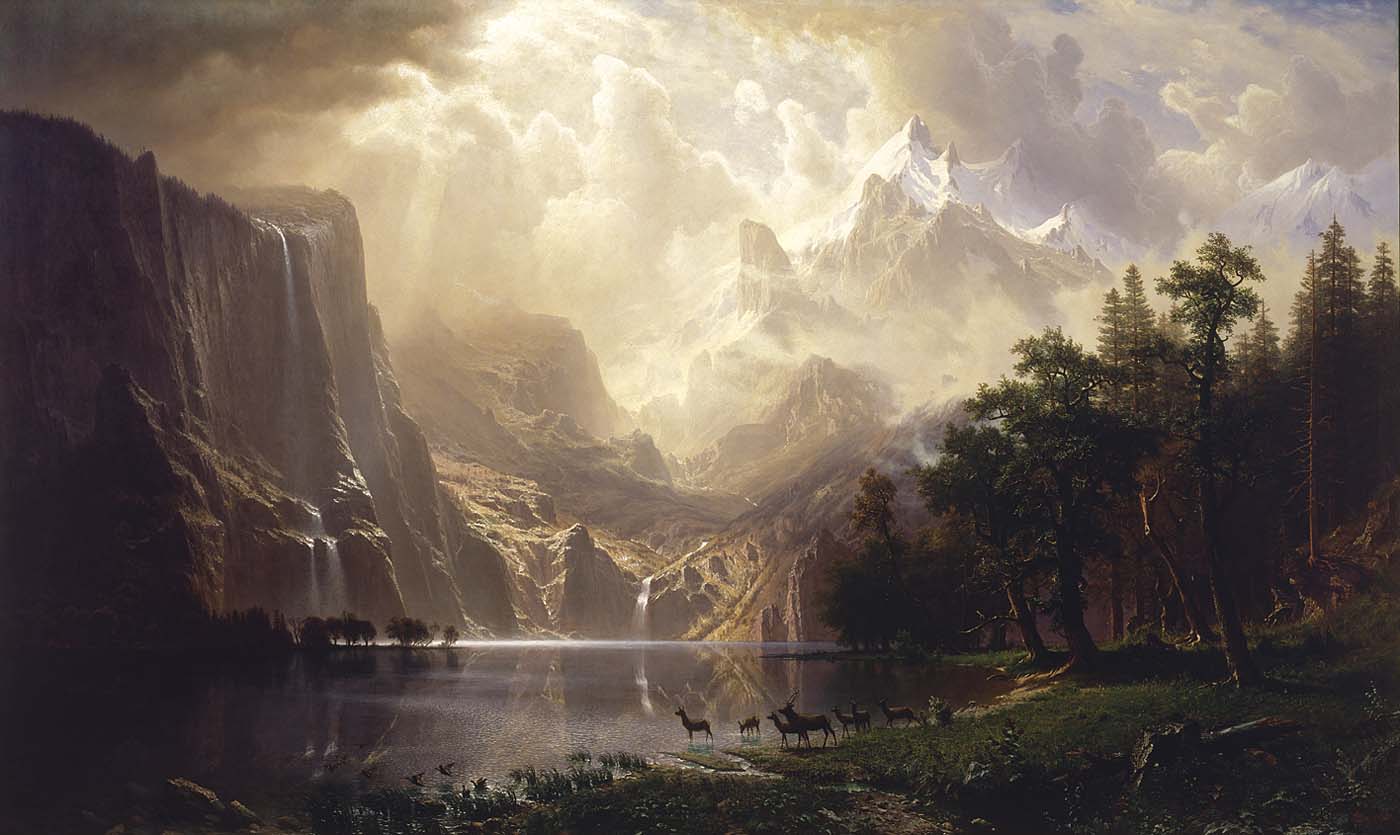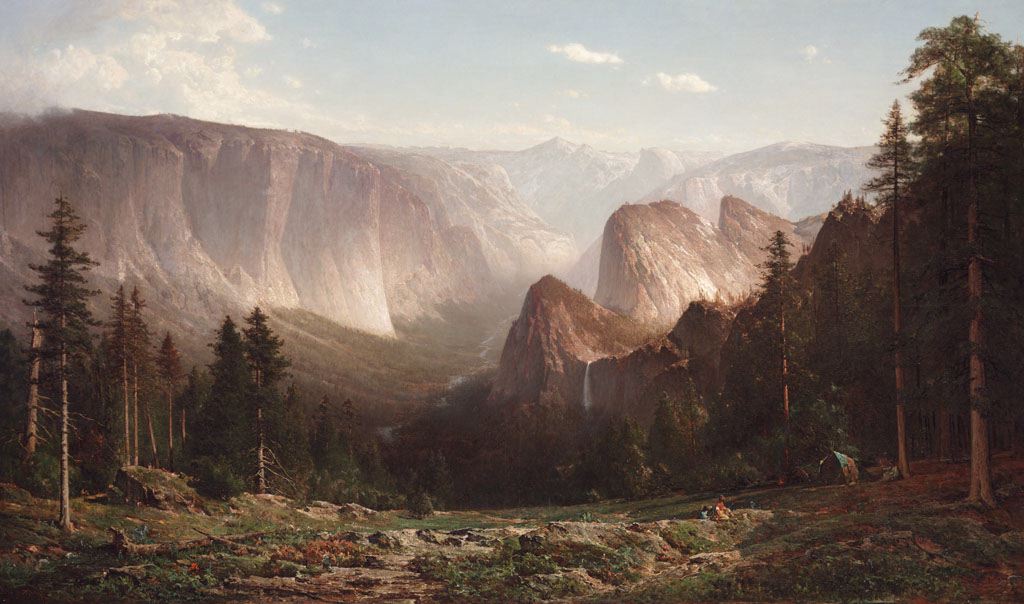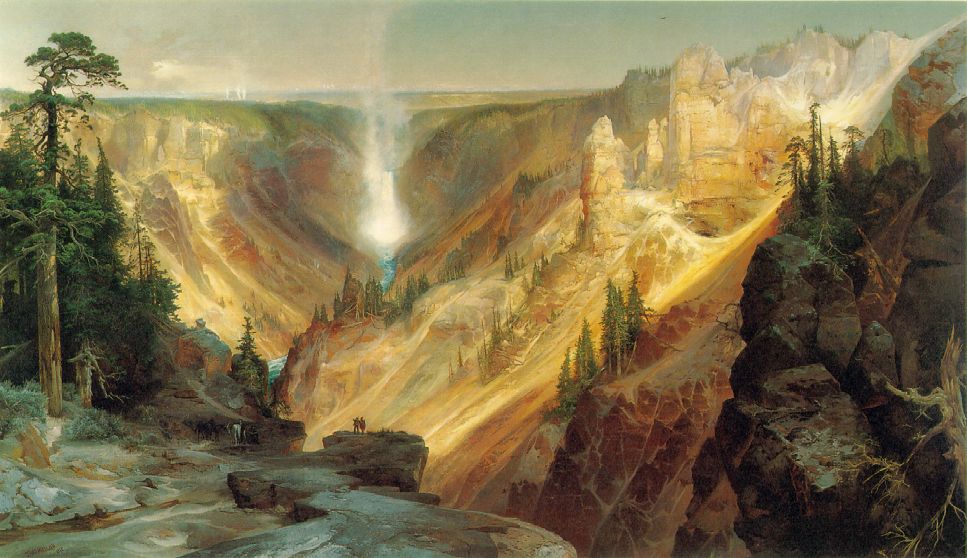Now that I have migrated my Multiply albums to my own website and also created my blog on the Stuif site , it is time to get my website out of its hibernation. Because for a long time I have not really maintained it.
So long that I had almost forgotten what I had put into it. Like for example my Virtual Museum. I created it in 2002 as a collection of some of my favourite painters. A very personal choice, often they have not created many works of art, so it is a pleasant surprise when you visit a museum and find out that they have a Balthus or a Delvaux or a Cole .
A Cole? Maybe you have never even heard about him.
Thomas Cole (1801-1848) was the founder of the Hudson River School, an American school of Romantic landscape painters. They started painting in the Hudson Valley (New York) although later they also visited other regions.
 This is one of Cole’s paintings, created in 1826. The Falls of the Kaaterskill in the state of New York.
This is one of Cole’s paintings, created in 1826. The Falls of the Kaaterskill in the state of New York.
As romantic as it can be. Click on the picture to enlarge it and try to find the single person depicted, to show how fragile a human being is.
With my waterfall addiction I was of course curious to find out if waterfalls were a common topic for these landscape painters.
And indeed, they were..:-)
This is my favourite painting, by Albert Bierstadt, 1830-1902. He was born in Germany but emigrated, one year old, with his family to the USA.
 It is called “Among the Sierra Nevada Mountains” and dates from around 1868. The Sierra Nevada is a mountain range in California, culminating in Mount Whitney at 4421 m.
It is called “Among the Sierra Nevada Mountains” and dates from around 1868. The Sierra Nevada is a mountain range in California, culminating in Mount Whitney at 4421 m.
California? It looks more exotic, like a landscape in Avatar..:-)
And that was indeed a criticism of his contemporaries, that he was not realistic enough. People were also critical about the size of his paintings, that they were dwarfing the works of his fellow-painters. This one measures (including the frame) 245 x 367 cm !
A beautiful painting.
Here is another one, by Thomas Hill (1829-1908). Also a landscape in California, named Great Canyon of the Sierra, Yosemite. It dates from 1872. Also here signs of human life, an Indian tipi. Keep in mind that this part of the USA had only been recently explored and basically was still Indian territory.
One more, by Thomas Moran (1837-1926). In 1871 he joined, as a guest artist, an expedition to Yellowstone, until then an almost unknown part of the USA.
Back to the East Coast, the Niagara Falls, painted in 1857 by Frederic Edwin Church (1826 – 1900). Church was one on the most influential painters of the Hudson River School.
A final one by Church, possibly his most famous one, an impression of the Andes in South America, where he had traveled to Equador and Columbia a few years earlier. It was completed in 1859 and a huge success on its first exhibition in New York, with people queuing and paying money to view the painting. Zoom in on the painting and try to find the village with the church, and other details.





I enjoy this school of painters which is why I enjoy the final landscape scenes in the Last of the Mohicans
Interesting that we have more in common than our love of nature..:-) The Last of the Mohicans is the 1992 movie? Must try to download a copy.
Have always loved landscapes like these. Some of them remind me of Zane Grey (ever heard of him?) novels which I read in my schooldays. TQ
I had never heard about Zane Grey. But now I have read two of his books, Riders of the Purple Sage and The Rainbow Trail, both available for free on the Internet. Very nice reading! I can understand that the paintings remind you of “Surprise Valley”..:-) Where those books illustrated when you read them?
Hi Jan, looks great your new blog. You have a very interesting museum. And the previous post on the Kwai Loh is really amusing.